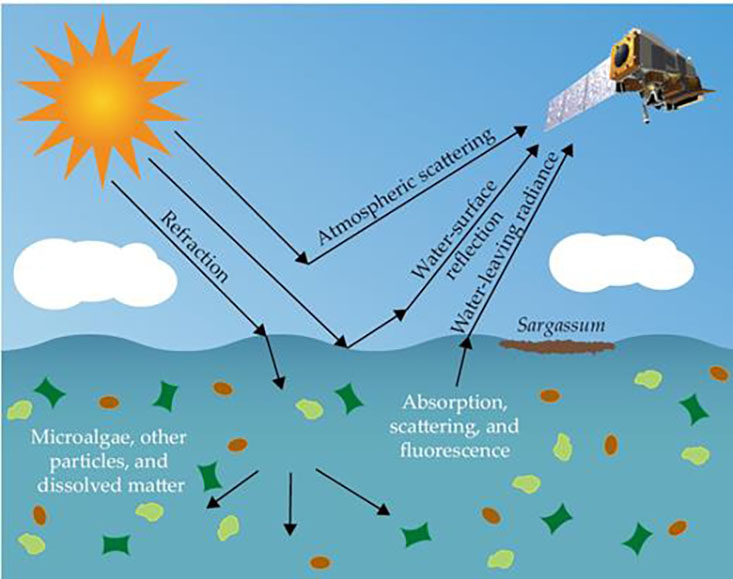“The short article provides an overview to physicists on how ocean optics works on aquatic algae. One example is the recent blooms of the Atlantic Sargassum macroalgae that had tremendous impacts on the ocean ecology, coastal environments, and human beings. Ocean optics has played, and will continue to play, a central role in measuring and understanding both microalgae and macroalgae in the field and from space.” – Chuanmin Hu
Oceans and lakes are full of microscopic algal particles—single cells that are 1–200 µm in size and range in concentration from several tens to millions per liter of water. Various types of macroalgae, sometimes called seaweed, are also ubiquitous in oceans and lakes. Sargassum, Ulva, giant kelp, and others live either on the ocean floor or in surface water. Both microalgae and macroalgae are important to their local ecosystems. They also affect the environment around the world and the way humans interact with the ocean. Today, satellites and the developing field of ocean optics are rapidly changing the way scientists measure algae and their interactions with the environment. Continue reading on Physics Today.
